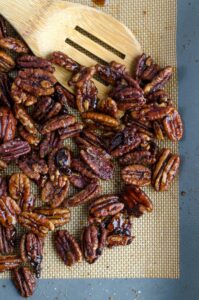
Find the latest news in the Mohair SA Newsletters.
Find auction results, industry reviews and other information at www.mohair.co.za.
Historically, the Eastern Cape has been the prime Angora farming area in South Africa and today, Angora farming is mainly practiced within a 300km radius of Port Elizabeth. Consequently, the city forms the nucleus of the South African mohair industry.
South Africa is the world leader in mohair production and exports over 95% of its total production, mostly in processed form. The South African mohair industry is highly dependent on the international market; largely because the domestic market is not large enough to support the industry (i.e. mohair products are not affordable to the majority of the South African population).
Volatility in currency/exchange rate can cause difficulties for the South African Mohair industry.
The Eastern Cape town of Jansenville – located in the geographic heart of Mohair country – has the country’s first mohair museum, thanks to funding from the Mohair Trust, with Mohair SA as project co-ordinator. The museum theme is ‘From the veld to the fibre and the future’. The displays follow a logical sequence of the actual processes from shearing to yarn to end product. Added to which there is a display of historic articles, coupled with an educational experience of the Mohair story. Find out more at www.jansenville.co.za.
Source: www.mohair.co.za
To ensure fibre quality and consistent availability, take care in the selection of stock to ensure superior generic breeding material. A good selection of the breeding ewes is important and further to breed or buy good quality rams to use in the breeding herd.
A good breeding programme includes getting rid of old animals and poor breeders. Class the young ewes as replacements for the old and poor breeders and make sure you purchase or breed good rams. The ewes need careful attention during kidding time. Once the newborn kids have their first drink of colostrum, they are normally fine. After six months, they’re ready to be shorn.
The technique in sheering an angora goat is just as important as sheering a wool sheep. Particularly in avoiding double cuts so the length of the fleeces remains constant. Length is an important factor in the sale of mohair. To this end, meticulous care is taken in the selection of stock to ensure superior genetic breeding material.
Angora goats require adequate and suitable shelter especially post-shearing. Supplementary feeding must also be provided post-shearing.
The conversion of mohair fibre into a product, such as a garment or a household article, is a lengthy process. It can, however, be grouped into four distinct stages:
Quality remains the highest priority throughout the process of mohair production in South Africa. Fixed standards are also in place to ensure that quality consistency of the raw material can be guaranteed throughout the world.
It can be expensive for farmers not to use the classing standards. Buyers will discount bales that are not uniformly classed, and agents can re-sort such bales for their own profit.
The Mohair Empowerment Trust was launched by the mohair industry in 2011 with the aim of assisting black farmers and entrepreneurs to become part of the mohair industry. Visit www.mohairempower.co.za.
In order to produce top quality mohair, thorough breeding programmes are of vital importance. Breeding programmes are difficult to apply in a communal pastoral system where the veld belongs to the community, as all types of goats run together. During the mating season, this producer will have to tend the goats day and night to avoid crossbreeding.
Further challenges to entering the primary mohair industry include:
In order to fully reap the benefits of a deregulated marketing system, the producers must have access to an effective and working infrastructure that includes the free flow and availability of marketing information.
Read about the Mohair Trust at www.namc.co.za, website of the National Agricultural Marketing Council (NAMC).
Further reference: